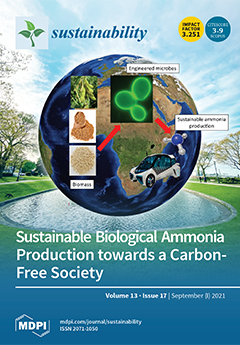Open AccessArticle
Learning Ethical, Environmental and Professional Responsibility at Universitat Politècnica de València. Where Are We?
by
Ester Gimenez-Carbo, María Esther Gómez-Martín, Ernesto Fenollosa, Marta Cabedo-Fabrés, Eloína Coll-Aliaga, Ignacio Andrés-Doménech, María-Teresa Sebastiá-Frasquet, Maria Vargas, Nuria Pascual-Seva, Alicia LLorca-Ponce, José Félix Lozano and Antonio Martí-Campoy
Cited by 3 | Viewed by 1864
Abstract
This paper presents a study on the development of the cross-curricular learning outcome (CCLO) “Ethical, environmental and professional responsibility” for students of different Bachelor’s Degrees taught at Universitat Politècnica de València (Spain). The work involved in the development of this learning outcome entails
[...] Read more.
This paper presents a study on the development of the cross-curricular learning outcome (CCLO) “Ethical, environmental and professional responsibility” for students of different Bachelor’s Degrees taught at Universitat Politècnica de València (Spain). The work involved in the development of this learning outcome entails great complexity, given the double dimension of responsibility that it involves. At the end of their training at the university, students are expected to show ethical, environmental, and professional responsibility towards themselves and others. Interviews have been conducted with lecturers who work and assess this outcome in their subjects, most/all of them related to science and engineering. The objective was to identify the learning approach used in the different subjects to guarantee the acquisition of this CCLO by the students. A focus group has also been carried out with students to determine the importance they give to this learning outcome, and to know their degree of satisfaction with the training received. The methodology used to obtain the data from lecturers and students and to process the information to get a precise diagnosis is fully described in the paper. Results are satisfactory to some extent: most of the lecturers carry out appropriate activities and most students achieve the expected proficiency level. Finally, recommendations are given to improve the development of this cross-curricular learning outcome.
Full article
►▼
Show Figures





